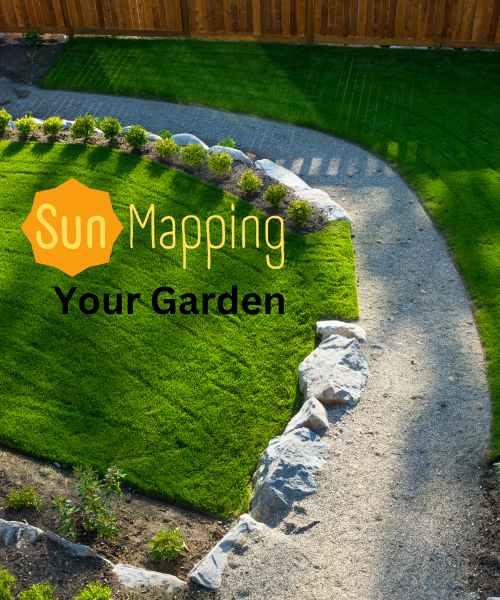
Sun Mapping Your Garden
Despite how good of a gardener you may (or may not) be, there is more to successful gardening than a green thumb. Without proper sunlight, plants will not thrive. Sun is one of the most important elements that a plant requires to grow. Think back to science class and how plants use the process of photosynthesis. This is the process of plants converting energy from light into chemical energy.

Disclaimer: This section contains affiliate links, which means I may earn a small commission when you purchase through links on my site at no additional cost to you.
Why Sun Map?
Sun mapping your garden can help you understand the presence of the sun in your yard. Essentially, sun mapping is tracking and observing what areas of your yard receive sun each day and for how long. Doing this will give your plants a leg up (or a leaf up), so to speak. Some plants require at least 6-8 hours of sunlight a day, while others can thrive with a surprisingly low amount of light.
How to Tell How Much Sun Plants Need
You can determine the amount of sun exposure a plant needs by reading the tags on the plants you purchase or by reading the back of seed packets.
Here is a breakdown of what the sun exposure requirements mean:
Full Sun: At least 6 hours of sun exposure throughout the day.
Partial Sun: At least 3 – 6 hours of sun exposure throughout the day.
Partial Shade: Close to 3 hours of sun exposure throughout
the day, protected from the most intense afternoon sun.
Materials and How-To
You can easily create a sun map with just paper, colored pencils and your time. If you prefer gadgets, you can purchase a garden light meter. You will want to create your sun map during the season you intend on growing, since the position of the sun changes seasonally.
Start with a sketch of your proposed garden, including any trees, shrubs, fences and structures.
Begin in the early morning and mark down where the sun and shade are each hour or two in the garden. Using colored pencils will be helpful in keeping track of sun, shade and hours. Make a key for your reference using the different colors. Indicate patches of sun and shade on your map to determine how much sun exposure your garden will get.
Most planting will begin in early spring, which means that you may have to account for leaves that haven’t fully grown in on trees. The angle of the sun will change from spring to summer, so you may want to make a map for each season as it will likely change a bit. If it is cloudy, you will want to track more than one day to get accurate results.
Now that you know where the sun will be, you can choose the best place for your plants.
Happy Gardening!
ABOUT AUTHOR

Rebecca
Hello, I am Rebecca! I am so glad you are here on this journey with me! Here, I am sharing my passions including gardening, cooking, baking, crafting, natural living and so much more! In addition to the content I share on my YouTube page, I also write a blog.
It took a long time for the things I am passionate about to awaken within me. Now that they have, I am eager to share them with others.
Among the many things I am passionate about, gardening is one of them. In addition to gardening, I also enjoy different areas of art, crafting, photography and home project DIY.

RECENT POSTS


weighted Hula Hoop Challenge


